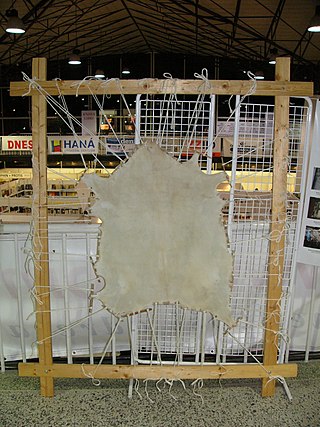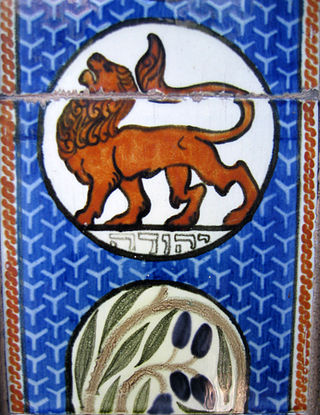
The codex was the historical ancestor format of the modern book. Technically the vast majority of modern books use the codex format of a stack of pages bound at one edge, along the side of the text. But the term "codex" is now reserved for older manuscript books, which mostly used sheets of vellum, parchment, or papyrus, rather than paper.

A manuscript was, traditionally, any document written by hand or typewritten, as opposed to mechanically printed or reproduced in some indirect or automated way. More recently, the term has come to be understood to further include any written, typed, or word-processed copy of an author's work, as distinguished from the rendition as a printed version of the same.

Parchment is a writing material made from specially prepared untanned skins of animals—primarily sheep, calves, and goats. It has been used as a writing medium for over two millennia. Vellum is a finer quality parchment made from the skins of young animals such as lambs and young calves. The generic term animal membrane is sometimes used by libraries and museums that wish to avoid distinguishing between parchment and vellum.

Rastafari is an Abrahamic religion that developed in Jamaica during the 1930s. It is classified as both a new religious movement and a social movement by scholars of religion. There is no central authority in control of the movement and much diversity exists among practitioners, who are known as Rastafari, Rastafarians, or Rastas.
Black supremacy or black supremacism is a racial supremacist belief which maintains that black people are inherently superior to people of other races.

In cryptography, a scytale is a tool used to perform a transposition cipher, consisting of a cylinder with a strip of parchment wound around it on which is written a message. The ancient Greeks, and the Spartans in particular, are said to have used this cipher to communicate during military campaigns.

The Lion of Judah is a Jewish national and cultural symbol, traditionally regarded as the symbol of the tribe of Judah. The association between the Judahites and the lion can first be found in the blessing given by Jacob to his fourth son, Judah, in the Book of Genesis of the Hebrew Bible.
The Holy Piby, also known as the Black Man's Bible, is a text written by an Anguillan, Robert Athlyi Rogers, for the use of an Afrocentric religion in the West Indies founded by Rogers in the 1920s, known as the Afro-Athlican Constructive Gaathly. The theology outlined in this work saw Ethiopians as the chosen people of God. The church preached self-reliance and self-determination for Africans, using the Piby as its guiding document.

A scroll, also known as a roll, is a roll of papyrus, parchment, or paper containing writing.
The Promised Key, sometimes known as The Promise Key, is a 1935 Rastafari movement tract by Jamaican preacher Leonard Howell, written under Howell's Hindu pen name G. G. Maragh.
The Royal Parchment Scroll of Black Supremacy is a text from Jamaica, written during the 1920s by a proto-Rastafari preacher, Fitz Balintine Pettersburg. The Royal Parchment Scroll is today recognized as one of the root documents of Rastafari thought, along with The Holy Piby and Leonard P. Howell's The Promise Key, which itself made considerable use of content from Pettersburg's work.
Grounation Day is the most important Rastafari holy day, It is celebrated in honour of Haile Selassie's 1966 visit to Jamaica.
Henry Archibald Dunkley was, along with Leonard Howell, Joseph Hibbert, and Robert Hinds, one of the first preachers of the Rastafari movement in Jamaica following the coronation of Ras Tafari as Emperor Haile Selassie I of Ethiopia on 2 November 1930.
Joseph Nathaniel Hibbert was, along with Leonard Howell, Archibald Dunkley, and Robert Hinds, one of the first preachers of the Rastafari movement in Jamaica following the coronation of Ras Tafari as Emperor Haile Selassie I of Ethiopia on 2 November 1930.
Abuna Yesehaq, was a leader of the Ethiopian Orthodox Tewahedo Church in the Western hemisphere.
Yasus Afari is a Jamaican dub poet.

The Topkapı Scroll is a Timurid dynasty patterned scroll in the collection of the Topkapı Palace museum.
The Rastafari movement developed out of the legacy of the Atlantic slave trade, in which over ten million Africans were enslaved and transported to the Americas between the 16th and 19th centuries. Once there, they were sold to European planters and forced to work on the plantations. Around a third of these transported Africans were relocated in the Caribbean, with under 700,000 being settled in Jamaica. In 1834, slavery in Jamaica was abolished after the British government passed the Slavery Abolition Act 1833. Racial prejudice nevertheless remained prevalent across Jamaican society. The overwhelming majority of Jamaica's legislative council was white throughout the 19th century, and those of African descent were treated as second-class citizens.
The Abrahamic religion of Rastafari emerged in 1930s Jamaica. During its early years it promoted largely patriarchal and conservative attitudes regarding gender and sexuality but these have altered as the religion has aged.
Rastafari has diverse beliefs regarding the afterlife, salvation and death. Many Rastas believe in reincarnation or eternal life. These beliefs are usually informed by the idea of Jah as a divine presence inside every person, and therefore Rastas believe they can realise their own divinity through the practice of livity.







